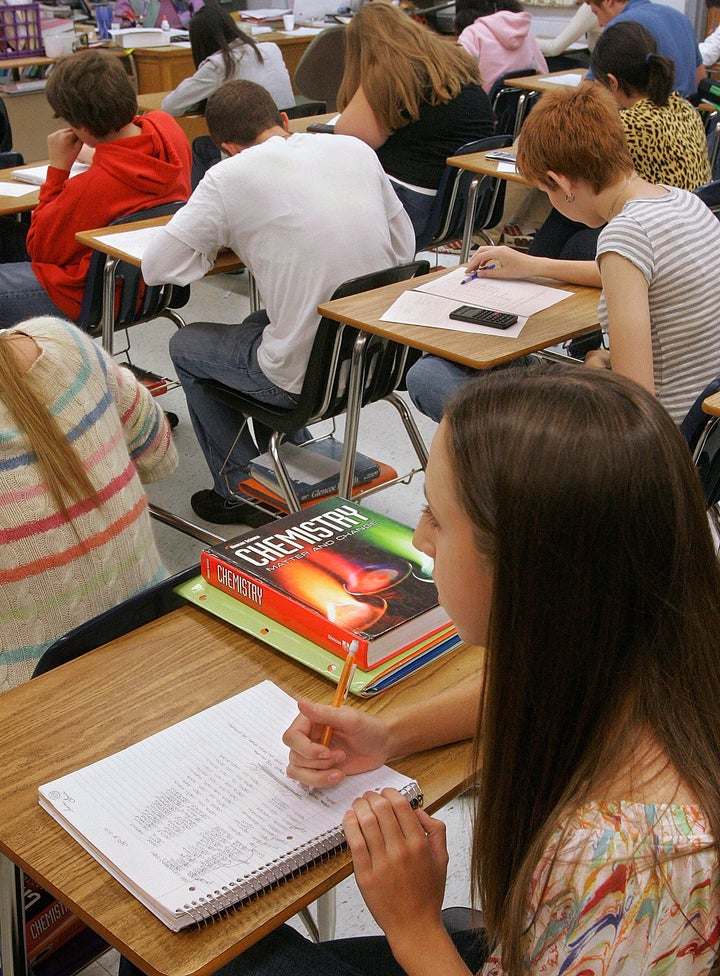
In a dramatic illustration of the impact of income inequality on how children do in school, the achievement gap between children from high and low income families is far higher than the achievement gap between black and white students, a pathbreaking research report from Stanford University has shown.
The report by Sean Reardon, a Stanford professor of education and sociology, shows that the income achievement gap--the difference in the average standardized scores between children from families at the 10th percentile of income distribution and children at the 90th percentile--is now "nearly twice as large as the black-white achievement gap."
A half century ago, the situation was just the reverse. The black-white gap was one and a half times as large as the income achievement gap as defined in the report, Reardon found.
In an interview with EdSource, he said he did not expect to come up with the findings he describes in his paper. The gap in achievement between rich and poor children, he said, "is quite dramatic and quite consequential." At the same time, he cautioned, "we don't really know why it has happened."
Nonetheless, he said, the achievement gap between rich and poor children presents a "big problem that has to be attacked on many fronts."
For nearly a half century a major focus of education reform in the United States, has been on trying to close the achievement gap between black and white students and, more recently, Latino students as well.
Abundant research has shown compellingly the high correlation between the income level of a student's family and test scores.But Reardon's report for the first time looks at the achievement gap between rich and poor children, how that gap compares to the achievement gap between black and white children, and how the gap has evolved over time.
Another notable finding was that the income achievement gap doesn't narrow, or widen, during the entire time children are in school. To Reardon, this suggests that "a big part of the processes that are responsible for this are things that happen in early childhood before kids get into kindergarten."
While children at the bottom of the income scale are not doing worse academically than similar kids did decades ago--and in fact are doing better based on their test scores--the wider income achievement gap is a result of children at the top end of the income scale doing far better, he said.
"When you look at poor 4th graders today they are doing better than poor 4th graders 30 years ago. But rich 4th graders are doing much, much better than rich 4th graders (over the same time period). Most of the growth has been because kids at the high end of the family income distribution level have pulled away from middle income kids, not because kids at the low end have fallen away from middle income kids."
The widening gaps, Reardon pointed out, are also not "confounded by race." In other words, the income achievement gap is not caused by having large numbers of black or Latino children concentrated at the low end of the income scale. "The achievement gap between rich and poor whites has gotten bigger over time," he said.
Reardon cautioned against concluding that income levels on their own are responsible for the achievement gap. "We don't fully understand the mechanisms that contribute to the gap as there are other factors associated with high incomes such as parental education," he said.
According to Reardon, the reasons the income achievement gap has grown include the following:
- The income gap between the richest and poorest families has grown over the past 40 years;
- High income families invest more time and resources into promoting their children's "cognitive development" than lower income families;
- High income families increasingly "have greater socioeconomic and social resources that may benefit their children;"
- Income inequality has led to more residential segregation by income level rather than race, which in turns means that high income children have access to higher quality schools and other resources.
He said policy solutions would include high quality pre-school and support for low income families so they can provide "cognitively stimulating environments for kids." Reardon also said education funds should be targeted more at schools serving low income children.
In general, he said, educators need to be thinking about about "policies that reduce inequality, policies that can pull the kids at the bottom of the income distribution up."
Reardon's report titled "The Widening Achievement Gap Between the Rich and the Poor: New Evidence and Possible Explanations" was published in September 2011 in Whither Opportunity? Rising Inequality, Schools, and Children's Life Chances, edited by Greg Duncan and Richard Murnane (Russell Sage Foundation).
Louis Freedberg is EdSource's executive director and looks at new strategies for closing the achievement gap, the impact of the current economic crisis on school performance, and developing new ways to engage Californians in the education crisis facing the state. Read more of his work, and other pieces, at EdSource.